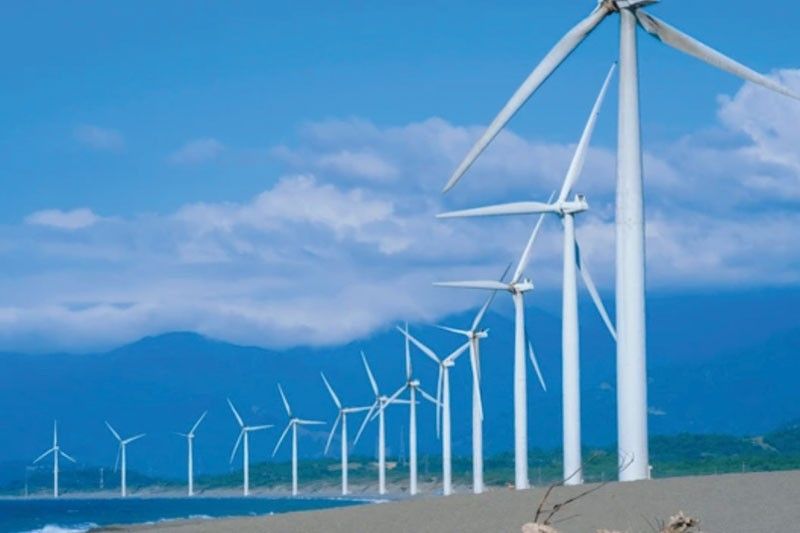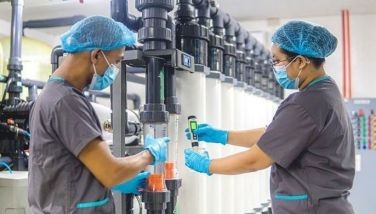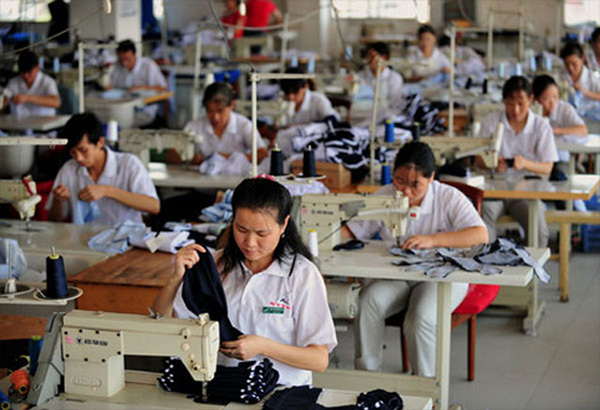Clean energy race: Green light or red flag?

MANILA, Philippines — The Philippines has shifted into high gear and revved up the engine toward a greener finish line, but the race is still far from over as roadblocks in the energy transition continue to pile up.
This makes one wonder if the country is truly ready for clean energy or if it is just trapped in a never-ending rhapsody of empty green promises.
During his State of the Nation Address last year, President Marcos said that renewable energy is “the way forward,” and bared plans to accelerate the realization of the country’s targets by opening up RE projects to foreign investments.
Under the Philippine Energy Plan (PEP), the government aims to increase the share of RE in the country’s power generation mix to 35 percent by 2030, 50 percent by 2040 and over 50 percent by 2050.
As of 2022, renewables only accounted for 22 percent of the energy mix, despite having a 30 percent share of dependable capacity.
To meet the country’s targets, Energy Secretary Raphael Lotilla told The STAR that around 52.826 gigawatts (GW) of new and additional RE installed capacity is needed over the next 20 years.
This, he said, would require a “massive amount of private sector support and investment,” on top of active efforts to promote energy efficiency and pursue emerging technologies to boost the country’s energy supply portfolio.
“Scaling up renewable energy development and utilization is one of the key transition policies of the government toward attaining a low-carbon and sustainable energy future,” Lotilla noted.
Green energy journey
The implementation of the Renewable Energy Act of 2008 has sparked a wave of interest in renewables, with over 1,300 service contracts awarded to RE developers as of March this year.
Of these contracts, 5.8 GW of capacity is currently up and running, and an additioanl potential capacity of about 137.8 GW is in the pipeline, the majority of which is from wind, solar and hydro.
To continuously trigger the expansion of the country’s RE capacity, the DOE has rolled out several support mechanisms for the RE space that include the green energy auction (GEA) program and the renewable portfolio standards.
The GEA paves the way for the immediate and timely investment in new and additional RE capacities through a competitive process, while the renewable portfolio standards require power suppliers to source an agreed-upon portion of their supply from eligible RE plants.
The DOE also recently issued new guidelines to simplify the application process for RE development, allowing firms to start permit processing, conducting surveys and other feasibility activities before the official 25-year contract term begins.
“Another key component of the government’s strategy in promoting clean energy adoption in the Philippines is the development of a smart and green transmission infrastructure to accommodate the influx of additional (RE) capacities, which will be complemented by investments in energy storage systems to manage its variability,” Lotilla said.
Investment gap
Despite a grand vision for a green energy future, the Philippines finds itself hitting a roadblock as the quest for crucial funding and investments continues to fall short.
Earlier, the DOE said the country’s clean energy transition would require up to P31 trillion in capital by 2040, citing the need to encourage financial institutions, particularly the local ones, to invest in RE development.
A 2018 study by the Asian Development Bank Institute, however, pointed out that most banks in Asia were reluctant to finance RE developments, considering these projects as “very risky with a low rate of return on their invested capital.”
“The expansion of green (RE) has been very limited in all Asian countries, despite their various differences. The contributing factors are numerous, but the financial factor has been the single major factor determining whether or not a country opts for such energy,” the study stated.
But Lotilla has remained hopeful that banks and other financial institutions will help drive the country toward reliable, clean and affordable energy to bolster national economic development goals.
“Innovative financial instruments, such as green bonds and sustainability-linked loans, play a crucial role in providing the necessary financial backing to propel innovative green technologies to market, scale-up (RE) projects, develop sustainable infrastructure and support energy efficiency initiatives,” he said.
‘Lacking ambition and speed’
In an interview with The STAR, clean energy think-tank Center for Energy, Ecology, and Development (CEED) slammed the government’s slow and lackluster targets, citing several concerns about the current energy policies.
CEED deputy executive director Avril de Torres stressed that the RE plans of the Marcos administration “lack the ambition and speed needed to address the country’s numerous power issues.”
“The recent release of the PEP only confirmed our worst fears that the government’s push for coal and gas will tie communities all over the country to decades more of fossil fuels,” she said.
She also called for policy coherence, as the absence of a fossil fuel phase-out strategy undercuts the country’s clean energy transition plans.
While the implementation of a coal moratorium late in 2020 was a step in that direction, de Torres said that there were ongoing efforts to “undermine and circumvent the moratorium under the guise of a lack of energy supply.”
“In truth, outages are due to system functionality issues inherent in coal plants, both old and new, and alleged gaming and economic sabotage by plant owners. Lack of supply is not the problem,” the climate advocate claimed.
Dependence on coal
Data from the DOE showed that nine coal-fired power projects with a combined installed capacity of 2,255 megawatts are expected to come online within the next three years.
Earlier, Energy Undersecretary Rowena Cristina Guevara made it clear that the DOE could not halt those developments because they were approved before the moratorium was put into place.
While the country heavily relies on coal, the DOE emphasized that the absolute amount of generation and corresponding emissions are minimal compared to those of China and Indonesia.
However, an article from the London-based energy think tank Ember states otherwise, pointing out that the Philippines is already leading the surge in coal dependency in Southeast Asia.
“The government needs to first recognize that current targets are not enough and that higher ambitions are achievable. We cannot afford to settle for less now,” de Torres said.
While the energy transition presents both challenges and opportunities for the country, one thing is certain: the current generation holds the power to maneuver the steering wheel toward the finish line.
As the engines roar and the wheels spin, Filipinos can only see either the green light that signifies clear track conditions or the red flag that indicates potential dangers.
- Latest
- Trending

































